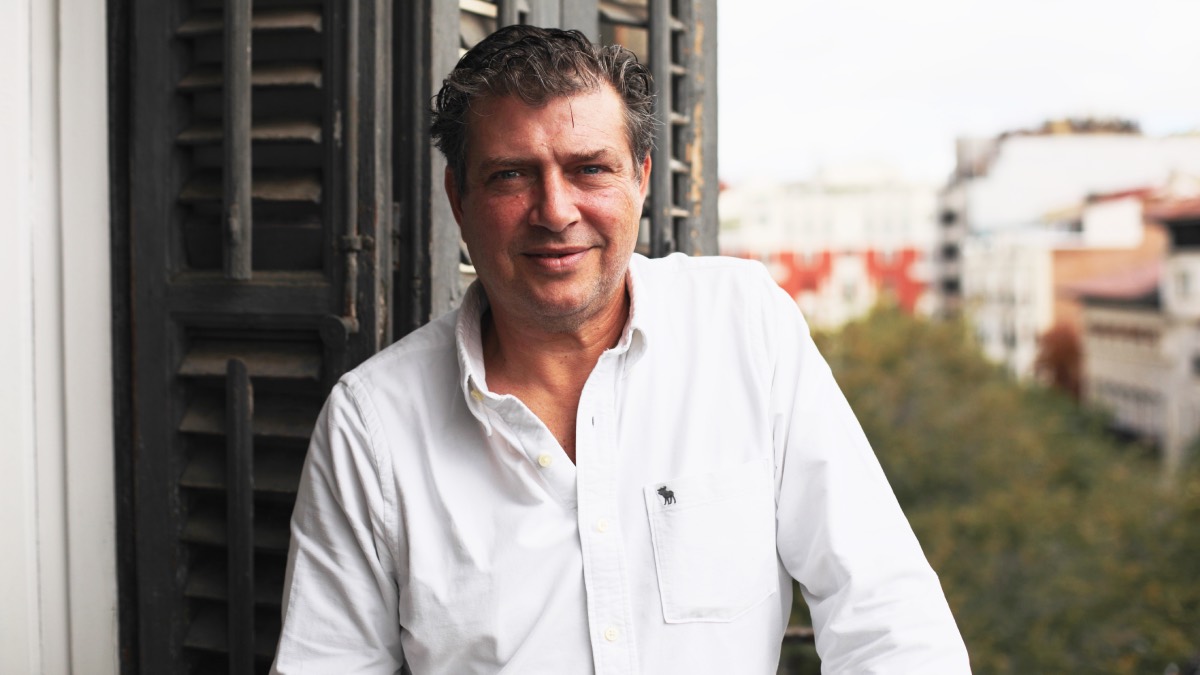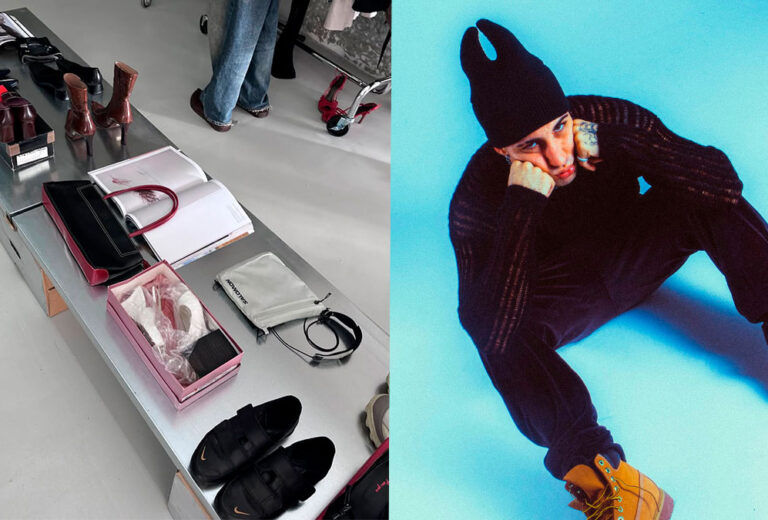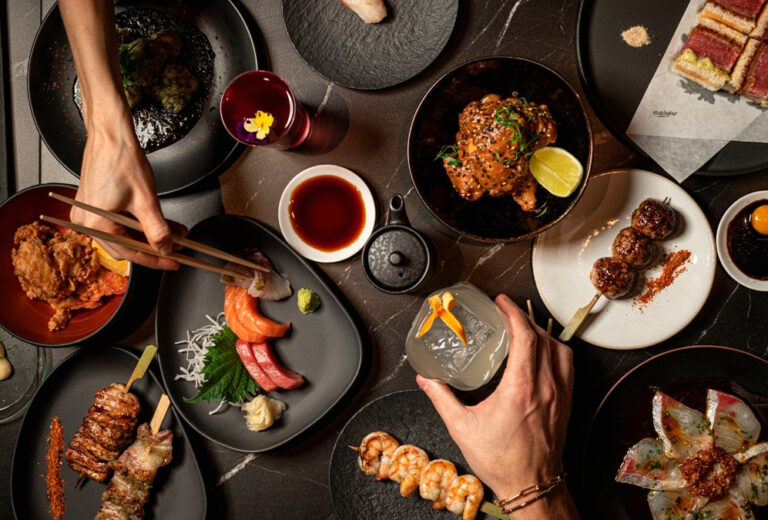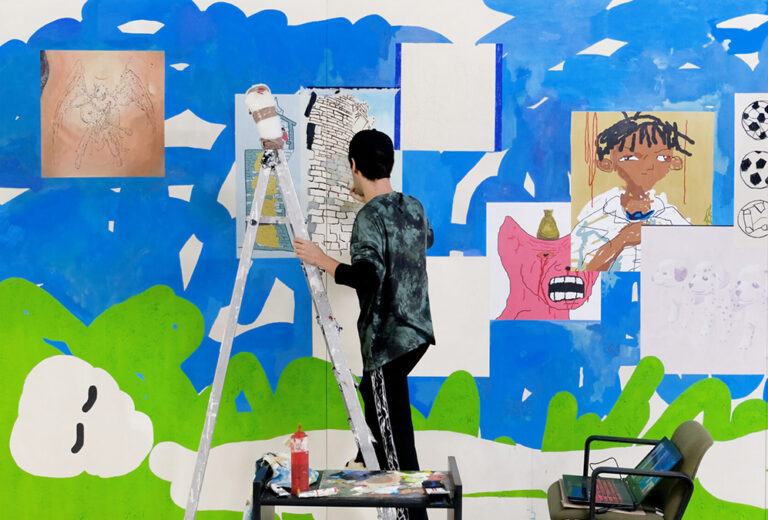Click here to read the Spanish version.
Aitor Menchaca is a peculiar winegrower. When he turned 50 years old, three years ago, instead of buying a Ferrari and becoming lovers -he jokes- he bought plots of land and recovered centenary vineyards. In fact, the name of his wines ‘100 palos’ comes from there: 50 palos of his own and 100, those of his plots. Menchaca did not dedicate himself to making wine or to farming or anything to do with agriculture, but he has always worked for himself, which is exactly what allows him to continue making wine. Being from Bilbao by birth, instead of going for Denominations of Origin in the north of Spain, he saw potential in the wines of Madrid. He is also a peculiar winemaker because instead of seeing viticulture as a nest of unprofitable problems, he sees it as an opportunity and a fun retirement plan. And since he goes hand in hand with his friend Juan Carlos Sancha, besides having fun, he is at ease.
Where did the idea of making wine in El Molar (Madrid) come from?
A few years ago, I had time and money and I started to travel around the world making videos of vineyards from the air to Australia, South Africa, Chile, Argentina, Mexico, United States, France…. This was during the four years my wife was stationed in Mexico. I came back and right now I have a relatively comfortable and easy life, I live from renting things. With that and some money I had saved, instead of putting it in a pension plan, I decided to invest about 100,000 euros in plots of land. The first year was in 2020 and it took me more than a year and a half to convince Juan Carlos Sancha to help me.
It cost you half as much to convince Sancha as it costs to produce a new vineyard…
I had to take him to the site. We saw that the grenaches were impressive, that they had other characteristics compared to other areas of the grenaches. And then I convinced him. In September 2020, the first year, we bought grapes to make two barrels, which is where we experimented. We made 1240 bottles, which is 200 cases, and they sold quickly. The following year we made 600 bottles of white; 100 cases that I didn’t sell because it lacked substance. It was not 100 palos, it was around 50 or 60 palos, it was not as good as it should be. And 2,300, 2,400 of red, Grenache. In the 22, which we bottled a month or so ago, there are already 1200 of white, which is 200 cases. I have made 300 magnums and about 3900 reds. In fact, that’s why I’m going to Hong Kong, because I have to start moving well.
For distribution in Asia?
Yes, for distribution. Here in Madrid I have it, for example, in the restaurant Chirón, El Pedrusco and La Tasquita de Enfrente. In the north I have it in the Güeyu Mar, and that is a fish restaurant.
What would you accompany it with?
Perfect with grilled fish, but there are people who do not see it that way. They think it is a wine that, without being sweet, has a lot of fruit. It does not reach 12 months in barrel, usually 11 and a half, because I empty the barrels to make the next vintage. In our case, the only time they touch the stainless steel tank is when all the barrels are put together for fining. You can’t clarify barrel by barrel, well, you can, but it’s ridiculous. And then the wine would not be homogeneous either, because there is a lot of difference between barrels.
In addition to the differences in grapes by variety and plot.
A lot. This year we will produce more or less the same wine as in 2022, a little less red. When we did the first harvest, we had about 300 kilos of grapes per hectare, the following year 800, this year a thousand…
Is it because of the recovery process, being abandoned vineyards?
Recovery is slow, there are many failures and new plants take time. It takes three years to produce grapes, and the idea is to harvest them separately.
What variety do you replenish?
Grenache. The clone is Garnacha 329, which is the best. Well, the best, according to Sancha and me, whatever Sancha says. If you have a consultant, you should listen to him.
How does someone who was not involved in agriculture deal with all the complicated bureaucracy involved in farming?
Life changes you. For example, I look daily at the wind app or the weather station I have. I keep an eye on the weather all day long. And like that, everything else.
Do you pick up influences from the wine you like?
From all over the world.
Do you tell Sancha “I want this”?
Yes, I was clear about the type of wine I wanted.
What is this wine like?
I like the wine to be fruity, to have fruit and not too much wood. The wood has to balance it, it has to give it a dimension, a volume, but it does not have to take precedence, it has to give it some nuances. The French oak barrels are new and give it vanillas that it does not usually have. I don’t like it to be a wine, so to speak, with a lot of layer. More of a pinot noir, grenache… type. If I liked it with a layer, I would be looking for tempranillo or mencía.
Tempranillo is made a lot in El Molar.
In this area they called it cencibel, because you know that everyone wants to have their own peculiarity. Right now we are making only one wine. Well, white and red, but the idea is to be able to make a “vino de paraje”. When the time comes for the paraje wines, I don’t know if they will be blended white and red at the same time.
Do you have varieties that you don’t know what they are?
Yes, sometimes it happens. There is a plant that we thought was a rare thing and in the end it was a Grenache. To know what a plant is, the safest way is to buy the rootstock and the graft. If you take a seed from a Grenache grape, it is not guaranteed that you will get a Grenache, because they may have pollinated with another plant. That is why there are rare things and we have rare things. These are plots from 1920, 1930, 1940 and they were multi-varietal.
Because of pests?
Yes, so when you got a disease, each plant was in different stages of flowering. So if you got powdery mildew it didn’t wipe them all out. It would wipe out the ones that got it just at the wrong time. They also used white to reduce the strength of the grapes, because many of them are dyers.
Of all the wine-producing countries you know, which one has aroused your curiosity the most?
I met an Italian in Chile who made experimental wine and I loved it. And Georgia also opened my mind a lot. I would like to go back and bring some of the varietals there. It is a country that seemed spectacular to me because of the varieties and the issue of the vats, the breaks and all the type of maintenance they do.
Have you done anything in a jar?
I have not made anything in a jar, but I do plan to do something. You have to choose the type of clay, because not all clay is the same. In fact, I was recently in Galicia with a guy who makes jars and then burns them with resin. I want to do a test there, to see how it comes out. There is also a black clay made in Oaxaca, which is black clay. I once tasted a mezcal that was in a black clay jar and it has its point of difference. What I do believe is that you should always dedicate a little bit of wine to experiment and try new things.
Does being within an appellation of origin clip wings or give impetus?
Of my wines, the 20th is not within the D.O., the 21st is and we understand that the 22nd is too. Without it, it is difficult to sell abroad. There are some wines which are outside the D.O. of La Rioja, but they are people who have a name. Being in the D.O. has its bad things and its good things. The good things I have not yet seen, to be honest. I would like the D.O. to include the pardillo, because it gives very good acidity to the wine. I do not understand that it is not being a grape from Madrid. It gives the wine from Madrid the uniqueness of the area.
How does a Bilbao native get into the D.O. Vinos de Madrid?
When I was in the United States I saw that wine tourism is a good business. But in order to get visits, you have to be in a beautiful place, have the vineyard conditioned and have the plots for that purpose. In fact, I want to buy some mini Jeeps for people to do tours. I had to put myself in Barcelona or Madrid because they are the big cities. It’s a question of size. Then here there are some pretty big grapes. So let’s say that was it. And next to my house, 20 minutes from my house.
And hand harvests, of course.
In boxes of 15 kilos.
How about finding labor?
A disaster. This year I took five people through the official channels and they took less and worse than those who are always doing it in town. I can’t even tell you the difference in cost. And on top of taking anything, they didn’t even select. There is not much qualified labor.
We do not talk about pruning.
I do everything myself. Except for the grape harvest, I do the pruning and the rest.
Who teaches you how to prune?
Sancha. Some will go wrong, but I have had more expensive mistakes in my life. I like pruning, it’s a real pleasure. If someday someone recorded me…, I usually have conversations with the plants because, look, a plant would normally have to have three or four arms and a couple of thumbs that are with one bud, two buds and so on. Here are the ones that were for sale to the cooperative that held up to 11 arms and are pruned to 30 or 40 thumbs. When they were small, they took a vine shoot, made a circle and from that shoot they took arms. So, of course, they had more production. I see them and I ask them: “Where are you going? Where do you want to go out? I think that with 300 or 400 plants we already know each other because we have been pruning for two years and we have had conversations, yes.
Is there anything you don’t like about making wine?
I don’t dislike it either, but what I like the least is that you can only do it once a year. That is to say, you start making barnacles and they can be salty this week, but next Sunday you can correct the salt, or the cooking point… but in the end they come out. But with wine you can only cook once a year, you can only prune once a year.
What has surprised you most about viticulture?
How well it is working and how comfortable I feel in the field. The best thing about the vineyards are the areas where there is no cover. It’s great.
What advice do you wish you had been given?
What advice that I have not been given, because I have been given a lot of advice. Sancha has given me a lot. But sometimes, things happen that you remember the dead of everything. For example, when last summer I suddenly realized that 2,800 of the 3,000 plants had dried up because of the drought. Apart from the money, it is the many hours of effort you have invested. This year that didn’t happen to me, because instead of planting 3000 plants, I planted 1200 and instead of in all the sites, in only one and I put some water tanks. It is an advice that I have given myself.
Besides, you wanted to work it yourself.
It is a pension plan. In two years, when I have 20 or 25 thousand bottles, at a couple of euros per bottle, it seems to me a good plan to live moderately retired; to be able to enjoy or have excuses to travel. Or simply to keep the ball busy. The minute people stop using the ball, it’s gone.
Where can we buy your wine?
Mainly through the web and during the visit to Menchaca Wines.
How do you see the future of the sector?
I think the sector is a little tight. There is a lot of stockpiling. In Spain they have focused on producing more on price than on quality. In fact, I think the only country competitive with Spain is South Africa. And there the labor force is a legal slavery, because they work for a pittance the hours they work and the conditions they work in…. In Portugal, good wines have to be paid as here or more than here. There are cheaper wines than here, but they are not good. When it comes to quality wines, Portugal is the same as Spain. I don’t understand Spain’s strategy of producing tons and tons of wine to pull down prices.
How do you see your future?
Very interesting. Working, meeting interesting people, happy and content. Besides, the first year, I had nothing. The second, I had wine to sell and wine to make, this year I have wine to sell, wine to make and wine to make. I have all three states of wine.
And about wine tourism, how do you manage this activity?
I am doing tours, I do events in the vineyards… It is an experience to spend the day. I don’t have a winery, I use the village cooperative. It’s wonderful there, you can see Madrid in the background and we don’t bother anyone.
For more information, to purchase wine and book experiences, visit its website.
Photo: Gonzalo Jiménez.





